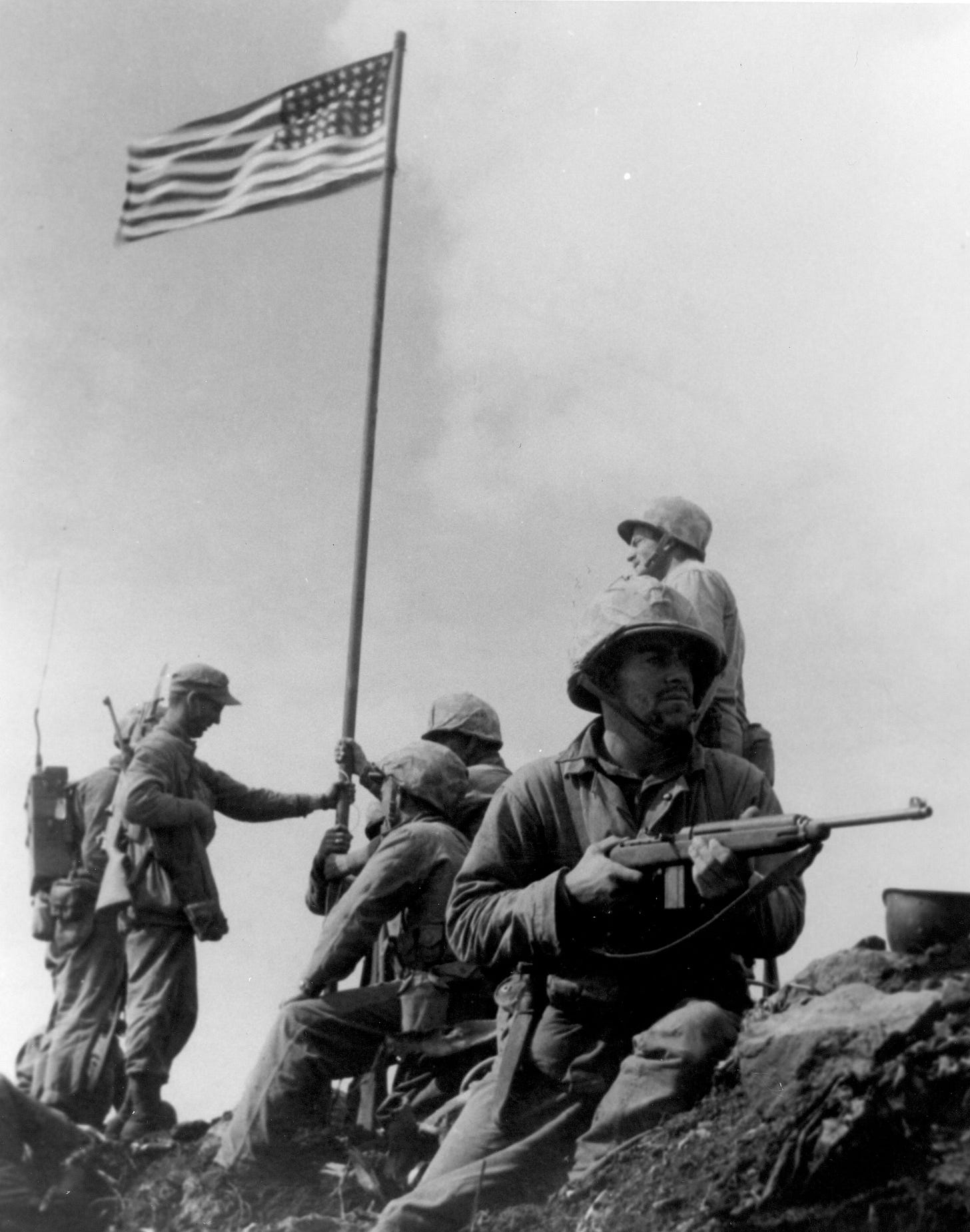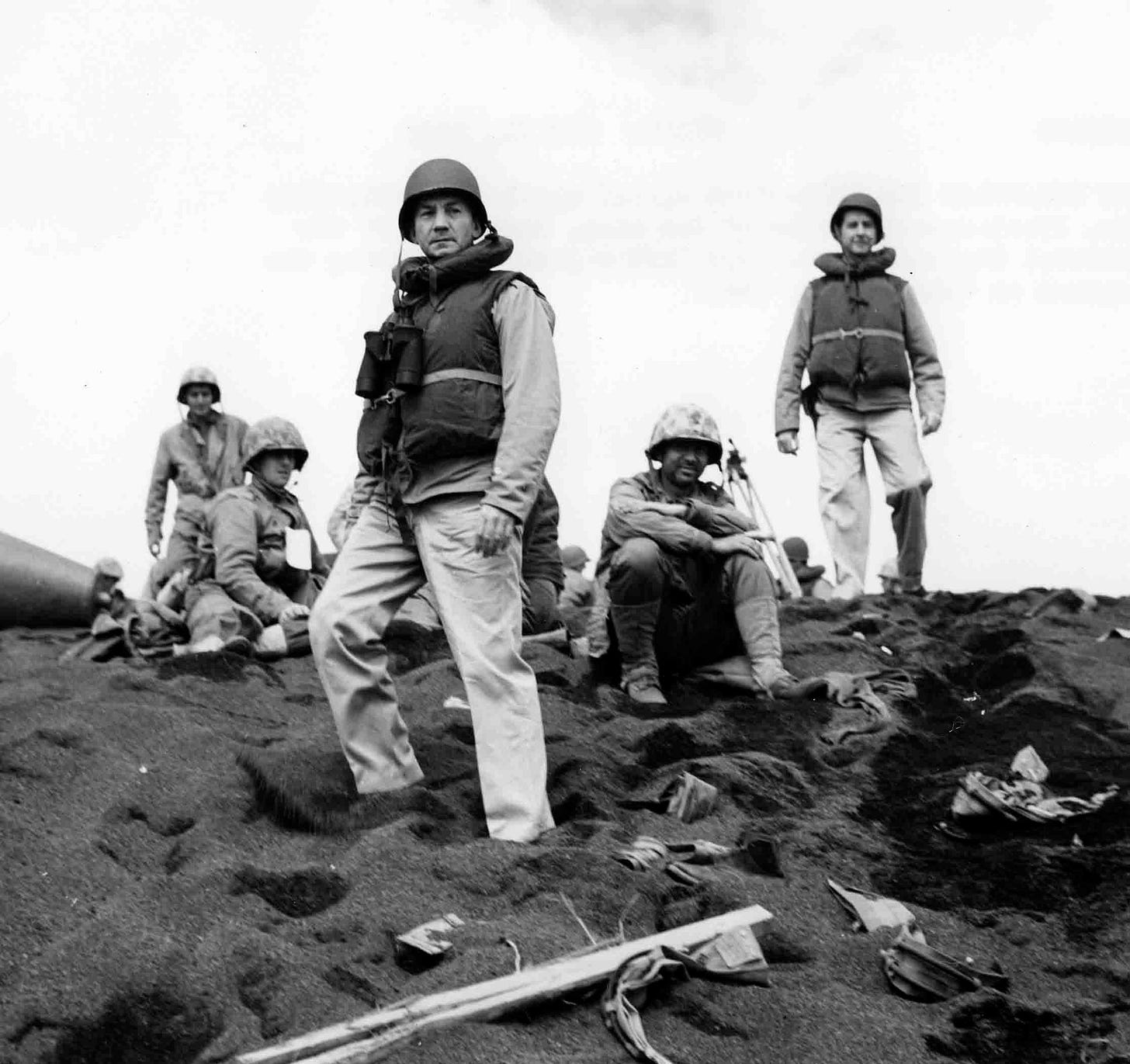Raising the Flag on Mount Suribachi
23rd February 1945: Under heavy fire and suffering many casualties, the US Marines seize the high ground on Iwo Jima - and become legends

On the 23rd February the Marines were making good but bloody progress on the Island of Iwo Jima, where they had landed on the 19th. The capture of Mount Suribachi was an early priority since it gave the Japanese a vantage point from which they could direct their guns.
1st Lt. Harold G. Schrier, executive officer of Easy Company, 2nd Battalion, 28th Marine Regiment, 5th Marine Division volunteered to lead a 40-man combat patrol up the mountain when the platoon leader was injured. They captured the top of the mountain some time after 10 am and set about raising the United States flag on a piece of piping that had been used by the Japanese to capture rainwater.

The Secretary of the Navy, James Forrestal1 was coming ashore at the moment when this flag went up. It was just a speck in the distance but he immediately recognised its symbolic significance, telling General Holland "Howlin' Mad" Smith, who was accompanying him:
Holland, the raising of that flag on Suribachi means a Marine Corps for the next five hundred years…

Forrestal decided he wanted the flag as a souvenir. Lieutenant Colonel Chandler Johnson, commander of the Marine battalion whose men had raised the flag, concluded that it belonged to the battalion. He sent a lieutenant to retrieve that first flag and to arrange for a replacement to be raised in its place, with a member of the press on hand.
Keep reading with a 7-day free trial
Subscribe to World War II Today to keep reading this post and get 7 days of free access to the full post archives.

